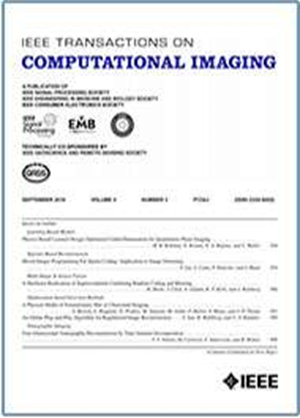Dual Bidirectional Feature Enhancement Network for Continuous Space-Time Video Super-Resolution
IF 4.8
2区 计算机科学
Q2 ENGINEERING, ELECTRICAL & ELECTRONIC
引用次数: 0
Abstract
Space-time video super-resolution aims to reconstruct the high-frame-rate and high-resolution video from the corresponding low-frame-rate and low-resolution counterpart. Currently, the task faces the challenge of efficiently extracting long-range temporal information from available frames. Meanwhile, existing methods can only produce results for a specific moment and cannot interpolate high-resolution frames for consecutive time stamps. To address these issues, we propose a multi-stage feature enhancement method that better utilizes the limited spatio-temporal information subject to the efficiency constraint. Our approach involves a pre-alignment module that extracts coarse aligned features from the adjacent odd-numbered frames in the first stage. In the second stage, we use a bidirectional recurrent module to refine the aligned features by exploiting the long-range information from all input frames while simultaneously performing video frame interpolation. The proposed video frame interpolation module concatenates temporal information with spatial features to achieve continuous interpolation, which refines the interpolated feature progressively and enhances the spatial information by utilizing the features of different scales. Extensive experiments on various benchmarks demonstrate that the proposed method outperforms state-of-the-art in both quantitative metrics and visual effects.连续时空视频超分辨率的双双向特征增强网络
时空视频超分辨率旨在从相应的低帧率和低分辨率视频中重构出高帧率和高分辨率视频。目前,该任务面临着从可用帧中有效提取远程时间信息的挑战。同时,现有的方法只能得到特定时刻的结果,不能插值连续时间戳的高分辨率帧。为了解决这些问题,我们提出了一种多阶段特征增强方法,该方法可以更好地利用受效率约束的有限时空信息。我们的方法涉及一个预对齐模块,该模块在第一阶段从相邻的奇数帧中提取粗对齐特征。在第二阶段,我们使用双向循环模块通过利用来自所有输入帧的远程信息来细化对齐的特征,同时执行视频帧插值。本文提出的视频帧插值模块将时间信息与空间特征拼接,实现连续插值,逐步细化插值特征,利用不同尺度的特征增强空间信息。在各种基准上进行的大量实验表明,所提出的方法在定量指标和视觉效果方面都优于最先进的方法。
本文章由计算机程序翻译,如有差异,请以英文原文为准。
求助全文
约1分钟内获得全文
求助全文
来源期刊

IEEE Transactions on Computational Imaging
Mathematics-Computational Mathematics
CiteScore
8.20
自引率
7.40%
发文量
59
期刊介绍:
The IEEE Transactions on Computational Imaging will publish articles where computation plays an integral role in the image formation process. Papers will cover all areas of computational imaging ranging from fundamental theoretical methods to the latest innovative computational imaging system designs. Topics of interest will include advanced algorithms and mathematical techniques, model-based data inversion, methods for image and signal recovery from sparse and incomplete data, techniques for non-traditional sensing of image data, methods for dynamic information acquisition and extraction from imaging sensors, software and hardware for efficient computation in imaging systems, and highly novel imaging system design.
 求助内容:
求助内容: 应助结果提醒方式:
应助结果提醒方式:


